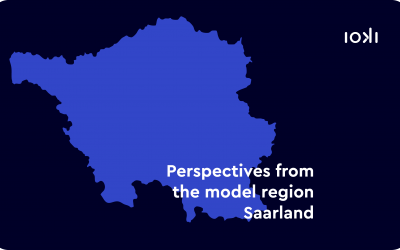A successful mobility analysis is characterized above all by a holistic approach. This means that we are moving away from the big picture and towards individual questions of detail, both in a temporal and spatial dimension. In doing so, we start with a general stocktaking of the status quo and move further and further into the area under investigation along different questions. All this is achieved with the help of immensely large and detailed data in combination with traffic planning know-how, which is incorporated into every part of the analysis. This enables us to describe the actual state in detail, to identify potentials and whitespots and to optimise the entire traffic – in line with the actual local requirements.
Our focus in every single mobility analysis is the development of individual and tailor-made recommendations. We are not interested in adapting fixed models to any particular region, but rather in finding real solutions to actual local problems within the horizon of the selected area, the population and infrastructure: The challenges in rural areas are very different from those in the city – I know that from my own experience. New solutions for employee mobility, for example, are on a completely new page. Basically, this is precisely the best characteristic of a successful mobility analysis: the development of concrete measures tailored to the area of operation to increase the individual attractiveness of a mobility offer.
In theory, this sounds absolutely comprehensible. But how do you make the leap into practice? What do you have to bear in mind when writing an essay on new mobility offers?
In practice, the main thing to keep in mind is to link new and existing solutions with each other. It does not help anyone to develop perfect solutions on paper, when they cannot be integrated into the real system efficiently or sustainably. That’s why we have to not only take the points of connection of new services in to account in every single analysis, but above all the symbiotic effect between the current transport system and new additional services. Our primary premise is to strengthen public transport as a safer mean of general mobility, to supplement it in line with demand and thus make it sustainable everywhere – whether in the city or in the countryside.
Could you give us an example of where the dovetailing of new and existing services – not least thanks to a previous mobility analysis – has worked optimally?
There are many examples showing the success of linking new and existing mobility solutions. But the best known example is probably ioki Hamburg. Since the start of the project in July 2018, we have been bridging the first and last mile in the Hanseatic city together with our ioki Hamburg partner, the Verkehrsbetriebe Hamburg-Holstein (VHH), in meanwhile three districts of the city with mostly electric shuttle vehicles, thus strengthening the local public transport offer. The project, which was even awarded the German Mobility Prize in 2019 is if nothing else so successful due to the detailed mobility analysis we carried out before the start. We proofed in which areas of the city the mobility demand was still unmet and where the already very broad public transport offering could be further optimized using on-demand solutions. The result was a demand-oriented offering that is primarily aimed at the outlying residential areas of Osdorf and Lurup and, since November 2019, also at the Billbrook industrial area, which is heavily frequented by commuters. In these areas we have identified the greatest benefits of needs-based mobility solutions as well as optimisation potential. Thus, in line with our data-based analysis developed an on-demand service that is deeply integrated into the public transport system.
The key word in all this seems to be “data“. But exactly what data is at stake and above all: Where does this data come from?
The big challenge with the topic of “data” is that there is not one single data set that fully reflects mobility from both the demand and supply sides. It is therefore a big “puzzle” that has to be put together from different data sources to form a coherent overall picture. Our aim is to draw a picture of the selected region that is as holistic as possible and its mobility situation. Our brushes and colours are different and multi-layered data sets. For example, we look at obvious information such as data on general mobility based on timetables, route networks, vehicle stocks, etc., then go one step further and for example check infrastructural data until we finally look at population structures and actual local needs for a detailed picture based on socio-economic data. Finally, we superimpose all these layers of data, proof them against each other and thus develop an overall picture of the mobility needs in the respective area under investigation.
If you had to make a forecast for the future based on all the analyses we have done so far: What would you say will our mobility look like in 10-15 years?
My personal vision of future mobility is one thing above all: integrated and digital. Only if we think of all the different solutions that we find in established and new forms of mobility in equal measure, in a common horizon, the claim to sustainable, needs-based, flexible and efficient mobility can prove itself. At the same time, digitization offers new forms of communication that include both the road user, the vehicles used as well as the infrastructure surrounding them. I am convinced that today’s systems will merge with one another and result in an integrated product. For example, we are currently working very intensively on how the digitalization of classic bus transport could look like. What happens if a bus no longer rigidly follows the same stops on a line in a fixed sequence, but passes flexibly based on current mobility needs? This is where we as ioki are pioneers and want to actively shape the future today – not by an “either-or” solution, but by an “optimal” overall public transport system.



